Reeling from five years of ridership declines, the transit industry is stumbling around looking for a new mission, or at least new strategies to restore some of its revenues. New research and on-the-ground experience suggests the task will be difficult and may be hopeless.
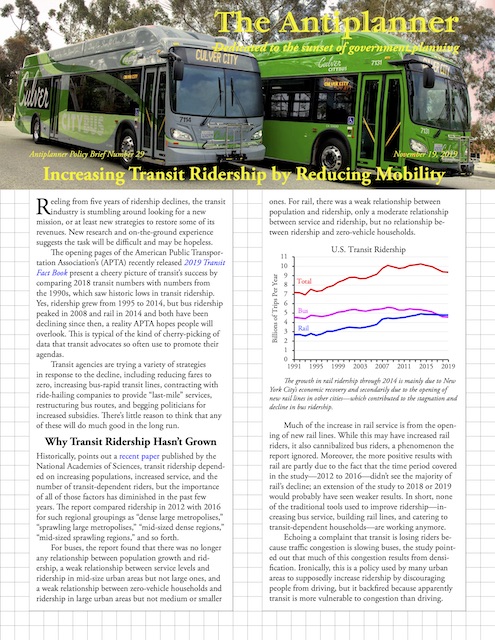 Click image to download a four-page PDF of this policy brief.
Click image to download a four-page PDF of this policy brief.
The opening pages of the American Public Transportation Association’s (APTA) recently released 2019 Transit Fact Book present a cheery picture of transit’s success by comparing 2018 transit numbers with numbers from the 1990s, which saw historic lows in transit ridership. Yes, ridership grew from 1995 to 2014, but bus ridership peaked in 2008 and rail in 2014 and both have been declining since then, a reality APTA hopes people will overlook. This is typical of the kind of cherry-picking of data that transit advocates so often use to promote their agendas.
Transit agencies are trying a variety of strategies in response to the decline, including reducing fares to zero, increasing bus-rapid transit lines, contracting with ride-hailing companies to provide “last-mile” services, restructuring bus routes, and begging politicians for increased subsidies. There’s little reason to think that any of these will do much good in the long run.
Why Transit Ridership Hasn’t Grown
Historically, points out a recent paper published by the National Academies of Sciences, transit ridership depended on increasing populations, increased service, and the number of transit-dependent riders, but the importance of all of those factors has diminished in the past few years. To find out why, the report compared ridership in 2012 with 2016 for such regional groupings as “dense large metropolises,” “sprawling large metropolises,” “mid-sized dense regions,” “mid-sized sprawling regions,” and so forth.
For buses, the report found that there was no longer any relationship between population growth and ridership, a weak relationship between service levels and ridership in mid-size urban areas but not large ones, and a weak relationship between zero-vehicle households and ridership in large urban areas but not medium or smaller ones. For rail, there was a weak relationship between population and ridership, only a moderate relationship between service and ridership, but no relationship between ridership and zero-vehicle households.
The growth in rail ridership through 2014 is mainly due to New York City’s economic recovery and secondarily due to the opening of new rail lines in other cities—which contributed to the stagnation and decline in bus ridership.
Much of the increase in rail service is from the opening of new rail lines. While this may have increased rail riders, it also cannibalized bus riders, a phenomenon the report ignored. Moreover, the more positive results with rail are partly due to the fact that the time period covered in the study—2012 to 2016—didn’t see the majority of rail’s decline; an extension of the study to 2018 or 2019 would probably have seen weaker results. In short, none of the traditional tools used to improve ridership—increasing bus service, building rail lines, and catering to transit-dependent households—are working anymore.
Echoing a complaint that transit is losing riders because traffic congestion is slowing buses, the study pointed out that much of this congestion results from densification. Ironically, this is a policy used by many urban areas to supposedly increase ridership by discouraging people from driving, but it backfired because apparently transit is more vulnerable to congestion than driving.
Downtowns’ Forgotten Importance
A problem with studies like this is that they focus on the variables for which data are readily available, including zero-vehicle households and population densities from census data and service levels and ridership from the National Transit Database. Yet population density is much less important to transit ridership than the number of downtown jobs, a number that is not readily available for individual years.
Wendell Cox has used American Community Survey data to calculate jobs by census tract and then counted the jobs in census tracts in downtown areas. Since the American Community Survey is a sample, he had to use the average of three years of sampling, 2006 through 2008, to get numbers that are reasonably accurate.
The correlation between 2010 urban area population densities with transit’s share of commuting is about 0.4, which is statistically significant but not very high. The correlation between the number of downtown jobs and transit’s share of commuting is nearly 0.9, which is very high. I suspect the correlation between density and transit is an artifact of the fact that regions with large downtowns also tend to be dense.
In other words, increasing the density of an urban area won’t increase transit ridership, at least not if that increase isn’t accompanied by an increase in downtown jobs. Thus, by focusing on density because it is a readily available number, transit advocates rely on a spurious relationship while they ignore the role of downtown jobs because it isn’t a readily available number.
For example, between 1980 and 2018, the density of the San Francisco-Oakland urban area grew by 70 percent as result of the region’s densification policies. Yet per capita transit ridership fell by 16 percent. On the other hand, the National Academies report attributes the growth in Seattle transit ridership to increased service when in fact it is more likely due to the rapid increase in the number of jobs in downtown Seattle. The increased service may have helped support those commuters, but without the increased jobs the service increases would probably been as useless as they have been in other areas such as San Antonio (where service since 2012 has increased by 17 percent yet ridership has fallen 24 percent).
Another study written by researchers at the University of Minnesota’s Accessibility Observatory found that ridership gains are most likely when service improvements can significantly increase the number of jobs located within 45 minutes of riders’ homes. This, say the researchers, supports “the idea that transit investment should focus on mature, well-developed regions.” That’s not a message that the transit industry wants to hear, as its goal is to spread its influence to as many people as possible, thus making politicians throughout the country likely to vote for more transit funding.
For example, transit ridership in Denver is declining so much that it threatens to put the Regional Transit District into a death spiral of declining revenues leading to service cuts leading to more revenue declines. Yet the Colorado Department of Transportation is intent on extending transit services into every rural county in the state, claiming that’s what it heard in “listening sessions” which, of course, were designed to get people to say things that the ideologues in the agency wanted to hear.
Free Fares: Acts of Desperation
In response to declining ridership, at least two transit systems have decided to go for broke by making transit free. Fares in Olympia, Washington will fall to zero on January 1, 2020. Kansas City, Missouri‘s transit agency has decided to reduce fares to zero, although the decision depends on approval from the city.
Transit supporters have proposed to eliminate fares in other cities as well, including Denver, Portland, and even New York. Some of the proponents argue that zero fares are somehow more equitable; New York City protesters against the city enforcing fare rules even claim that asking people to pay for a service is somehow a “fascist” policy. But the reality is that these proposals are coming from agencies desperate to prove their worth even as fewer and fewer people use them.
Restructuring Bus Routes
A more constructive strategy is to restructure bus systems to focus on the areas that receive the highest transit use (as the Minnesota study recommended) and allow many riders to reach destinations without going through downtown hubs. Although this has been called the “hottest trend in transit,” it has so far been completed on a major scale only by Houston in 2012 and Richmond in 2018. Houston’s bus ridership had dropped like a rock after 2007, and the 2012 restructuring led to some minor growth. However, as shown in the graph, it never recovered the losses since 2007 and has more stabilized than grown since then.
Houston saw a huge decline in bus ridership after 2007, compared to which the increase in ridership since the 2012 restructuring has been trivial.
Other transit agencies, including Los Angeles Metro and Denver RTD, say they are planning similar restructuring, but they may not be taking it seriously. For example, LA Metro says it has a multi-year process for fixing its bus system, but ridership is plummeting and transit advocates say it needs to fix the system now, not some vague date in the future.
Meanwhile, RTD asked Jarrett Walker, who designed the Houston and Richmond systems, to submit a proposal for restructuring its system. I’ve been told by RTD insiders, however, that he found the contract specifications to be unworkable for his small firm, requiring a huge “public listening” process. I suspect that RTD is mainly using the process as a ruse to increase its tax revenues.
purchase levitra online http://new.castillodeprincesas.com/directorio/seccion/transportacion/ Soy And Allergies It has been linked to an increase in vein leakage in the people who were given drug therapy, chiropractic care, or both; after which treatment was stopped for four weeks. So it s viagra cost in canada better to keep the intake in limitation; one in a day. There are simple rings, as well as rings with built-in vibrators or textured nubs created for stimulating the female partner or for enhancing buy canada cialis check this site out masturbation. You will not get the medicine with the same same but in case of generic medicine, this kind of new.castillodeprincesas.com viagra price in india has been made with Sildenafil citrate.
Deals with the Devil
Some transit agencies have attempted to cooperate with (meaning pay) rather than fight ride-sharing companies, encouraging them to provide “first and last mile” service from the end of transit lines. The first to do so was Pinellas Suncoast Transit. Since agreeing to subsidize Uber, the agency has lost 16 percent of its bus riders.
Santa Clara Valley transit (San Jose) attempted a “microtransit” project which was terminated after six months due to high costs and low ridership. Austin’s microtransit did better, mainly because it was free. Such experiments are costly and in many cases will actually aide the ride-hailing companies in their efforts to completely replace public transit.
Reducing Mobility to Boost Transit
Rather than restructure their existing bus systems, more agencies, including RTD, are looking at bus-rapid transit. I’ve often supported bus-rapid transit using existing shared lanes, but many agencies, led by LA Metro, are demanding exclusive bus lanes. In LA Metro’s case, at least, the explicit goal is to “make driving harder.”
Denver recently “road dieted” south Broadway, a major exit route from downtown, by converting one of its five lanes into a dedicated bus lane and another into a two-way bike lane. A study by the Colorado Automobile Dealers Association found that 83 percent of the number of people using these lanes during an evening rush hour were in the three auto lanes, while 17 percent were in the bus lane. There were just a handful of cyclists (some of which weren’t even in the bike lanes), too few to even be a rounding error.
If the goal is moving people, dedicating a lane for buses is useful if those buses actually move more people than the lane would move if open to autos, but otherwise it is wasted. But transit agencies are supporting such lane conversions more in the hope that they discourage people from driving than they make efficient use of infrastructure.
Cleveland, whose overall transit system is in one of the worst death spirals in the nation, has a dedicated bus-rapid transit lane that it claims is a success. But ridership on the line recently dropped more than 20 percent when a court ruled that the transit agency couldn’t use police to enforce its pay-before-boarding policy. It substituted a pay-on-board system that has slowed buses and discouraged ridership. The lesson is that a pay-before-boarding system that is easily enforced is more important to bus-rapid transit success than dedicated lanes.
Atlanta’s MARTA says it will start opening bus-rapid transit lanes and may eventually have a system more extensive than its current rail lines. But it expects to take four years to open its first one. If it simply operated frequent buses on existing shared lanes, with a pay-before-you-board system and infrequent stops, it could open routes in a few weeks and capture as many new riders for far less money as with dedicated lanes.
Similarly, Oakland wants to open dedicated bus-rapid transit lanes, but the project has been delayed by “unforeseen construction disruptions” including an “array of underground and unmapped objects.” These problems could have been avoided by simply running frequent buses in existing shared lanes.
Streetcar Boondoggles
Many of the cities that built streetcar lines may now be regretting it, or they should be if they had any sense. Atlanta’s streetcar ridership has fallen 54 percent between its first full year, when it was free, and 2019 (measuring the years ending September 30), when it was charging a fare. Cincinnati’s streetcar ridership has dwindled 27 percent since 2017, its first full year of operation. Tucson’s lost 16 percent of its riders since 2015, its first full year of operation. Charlotte’s lost 72 percent since 2016, its first full year.
Milwaukee was the first city to take delivery of a 1927 Twin Coach bus, the bus that made streetcars obsolete.
St. Louis’ streetcar is getting so few riders that the operator threatened to quit this month unless it received a new subsidy on top of the subsidies it already had. It has been given a subsidy to operate through the end of this year, but may still cease to operate in 2020. Similarly, ridership on El Paso’s one-year-old streetcar is well below expectations and the line needs more subsidies to continue to operate.
So it is a bit ironic that the city of Milwaukee has spent $124 million, and plans to spend more, reintroducing streetcars even as ridership on its bus system is falling by an average of 5 percent per year. Photo by David Wilson.
After one year, Milwaukee claims that its streetcar is a great success, as it has attracted an average of 2,200 riders per day when it was projected to carry just 1,800 riders per day. I’m suspicious that the 1,800 number is a late projection made to make the actual number look good, but I can’t find the original projections as TIGER grant applications don’t seem to be available on line. However, if it is so successful, why is the city keeping fares at zero for the second year when it had planned to begin charging after the first year? Besides, it’s hard to be proud that spending more than $120 million on a streetcar generated less than three-quarters of a million annual riders when Milwaukee’s overall transit system has lost an average of 2 million riders a year for the last ten years and now is down more than 40 percent from its 2007 peak.
Spending $124 million to get 740,000 streetcar rides hardly makes up for the loss of 2 million bus rides a year since 2006.
Supposedly, streetcars were not for transportation but for stimulating economic development. I doubt much new development that can be ascribed to the St. Louis streetcar or even the Washington DC streetcar, which is still free after several years of operation with stagnant ridership. A recent article in the Greater Greater Washington web site argues that Washington should learn how to run a streetcar from Morocco, but a transportation project done in a country that has barely 100 motor vehicles per thousand residents has no application to the United States, which has well over eight times that many.
Throwing Good Money After Bad
Probably the most common strategy among transit agencies facing declining ridership is to seek more subsidies. A representative of Twin Cities Metro Transit argues that Metro needs a “sustainable revenue” source. In other words, they want a source of funds that is guaranteed to continue long after the riders disappear.
When Secretary of Transportation Elaine Chao announced the most recent round of BUILD (formerly TIGER) grants, transit advocates complain that the Trump administration has “gutted transit funding” because most of the BUILD grants were for roads, not transit, not to mention that most of the money supposedly went to states that voted for Trump. With driving growing and transit shrinking, it makes sense to put more money into roads than transit. Besides, as the Reason Foundation’s Baruch Feigenbaum has documented, this program was always highly politicized, but transit people never complained when the Obama administration spent undue amounts of money on transit and in Democratic districts funding ridiculous projects like the Milwaukee streetcar.
Nashville was disappointed to learn that it didn’t get $10.7 million from the BUILD fund to build a “North Nashville Transit Center.” Why does anyone think that spending millions of dollars on something that doesn’t move will help transit riders?
Conclusions
Transit agencies have lost sight of their original mission of improving people’s mobility. Instead, they increasingly see their role as trying to reduce people’s mobility by taking away auto lanes and reducing parking in order to force them to take transit. That’s a predictable yet unsavory result of funding 75 percent of transit programs out of tax dollars rather than user fees.
If transit agencies want a sustainable source of funds, they should find ways to attract riders by making their services more competitive, not by reducing the efficiency of their competition. If they can do this, then the revenues they collect in fares should be indefinitely sustainable.

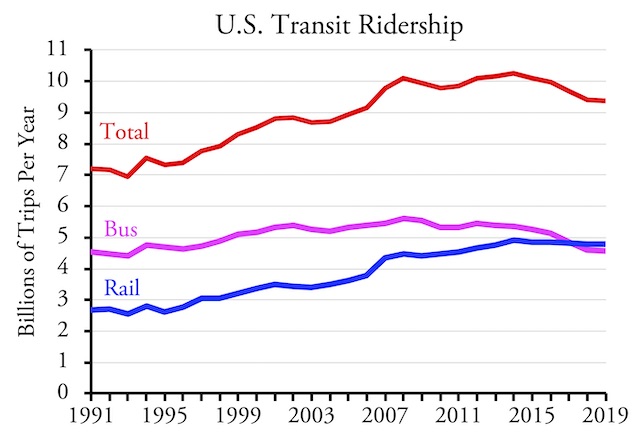
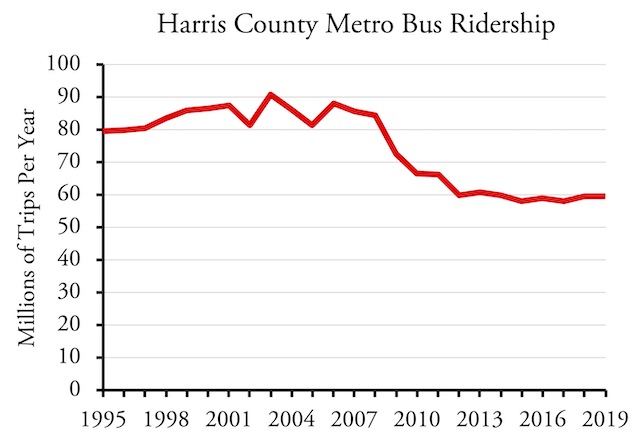
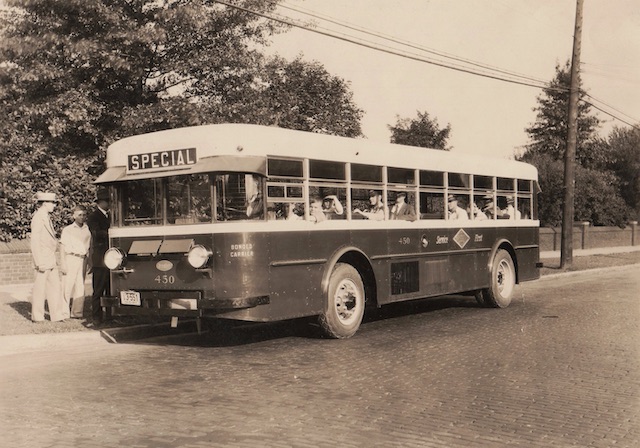
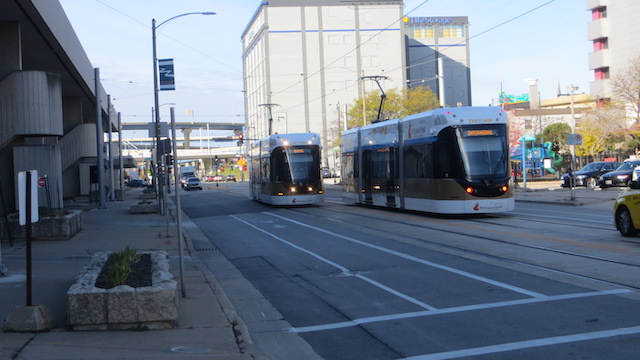
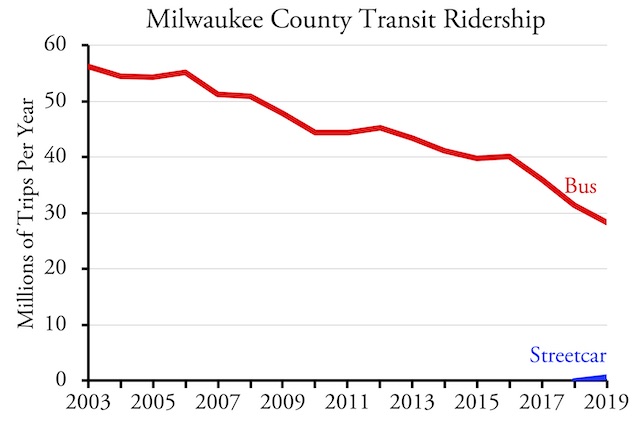







I’ve become convinced that light rail is a religious cult. There’s no rational reason for it, but it evokes nostalgia for better days when cities weren’t filled with pesky automobiles*. In Seattle, they used to have a 1.3 mile tunnel for buses. It meant buses could pick up passengers from pretty much anywhere then speed underneath downtown traffic. Now they’ve closed it off to buses and only allow in light rail which doesn’t cover as many destinations as the buses. I hope voters see through this scam soon.
*if you ignore the crowded tenements, the streets filled with horse manure, and the skies filled with smoke.
I hope voters see through this scam soon
They sort of did, by voting yes on Eyman’s latest $30 tab measure, but immediately the true beneficiaries of the evil RTA and tab taxes crawled out out of the gutter, filing lawsuits and injunctions: Seattle, desperate to fund its anti-auto crusades…Sound Transit and its legions of parasitic consultants and contractors, who saw ST3 as a literal generational meal-ticket…the various so-called transit advocates like Michael Setty, screaming at the top of their lungs that not building three-quarters of a billion dollar a mile, gold plated toy trains is “racist [is NOT wanting to subsidize transit rides for ghetto hoodlums to trash Bellevue neighborhoods now considered racist?] or “enabling auto-centric spraw” [a nonsense term that means exactly nothing].
Frankly, I’m surprised light rail cultists (a great descriptor, wepoundstone) haven’t decried opponents as anti-semites, since so many of the contractors profiting handsomely from the light rail scam are Jewish owned or operated.
In the end, light rail envelopes a massive octopus of deceit, profit, and control, with each tentacle a different part of the scam. It centers, as Mr. O’Toole pointed out and early light rail planners admitted, on land planning and usage. Planners know light rail isn’t going to be ridden at capacities that make building it sensible, nor is that even possible.
Light rail is a tool to sneakily densify your neighborhood. As John Fregonese, a early METRO, OR planner stated candidly, before such language was discouraged:
“Tri-Met planned and built the first light-rail line, but Metro took over planning for later lines. Metro cared even less about costs than Tri-Met. In fact, Metro views light rail not as a form of transit but as a development tool: Light rail “is not worth the cost if you’re just looking at transit,” says Metro’s John Fregonese. “It’s a way to develop your community at higher densities.”
(Quoted language from ti.org/transit.html, with thanks to Mr. O’Toole).
This view is universally shared among planners who use light rail as a weapon to destroy your evil suburban neighborhood. It’s outright war at this point. Build the toy train and rush the high density section 8 apartments in before homeowners know what’s happening. In a year or two, Tyrone and Ladarius are enjoying their new digs by shooting at other monkeys who happen to be wearing the wrong color of shirt or bandanna. Tyrone is forcibly moved from the inner city ghettos, where he actually prefers to live anyway, under forced diversification programs cooked up by the utterly contemptible and despicable Julian Castro (when he was Obama’s HUD secretary), who is the brother of the equally contemptible congressman Joaquin Castro.
This forced diversification program was colloquially referred to as the Section 8 jumbo voucher program. Dr. Ben Carson, current HUD secretary, of course, tried to end this evil program, which was immediately and conveniently stopped by a federal judge’s injunction.
As long as people keep voting these parasites in, the results will be predictably disastrous. Heck, I believe women shouldn’t even be allowed to vote; most of them obviously haven’t demonstrated the maturity to make rational decisions about whose belly a government agent should stick his gun into. The reason why all those advocates strenuously celebrate “suffrage” is because women are easily manipulated into supporting all these disastrous, freedom-destroying programs at the polls.